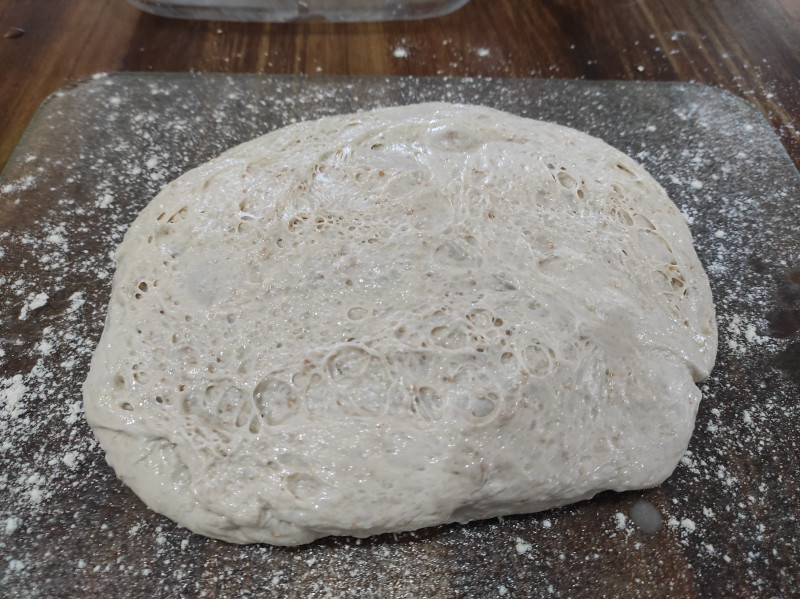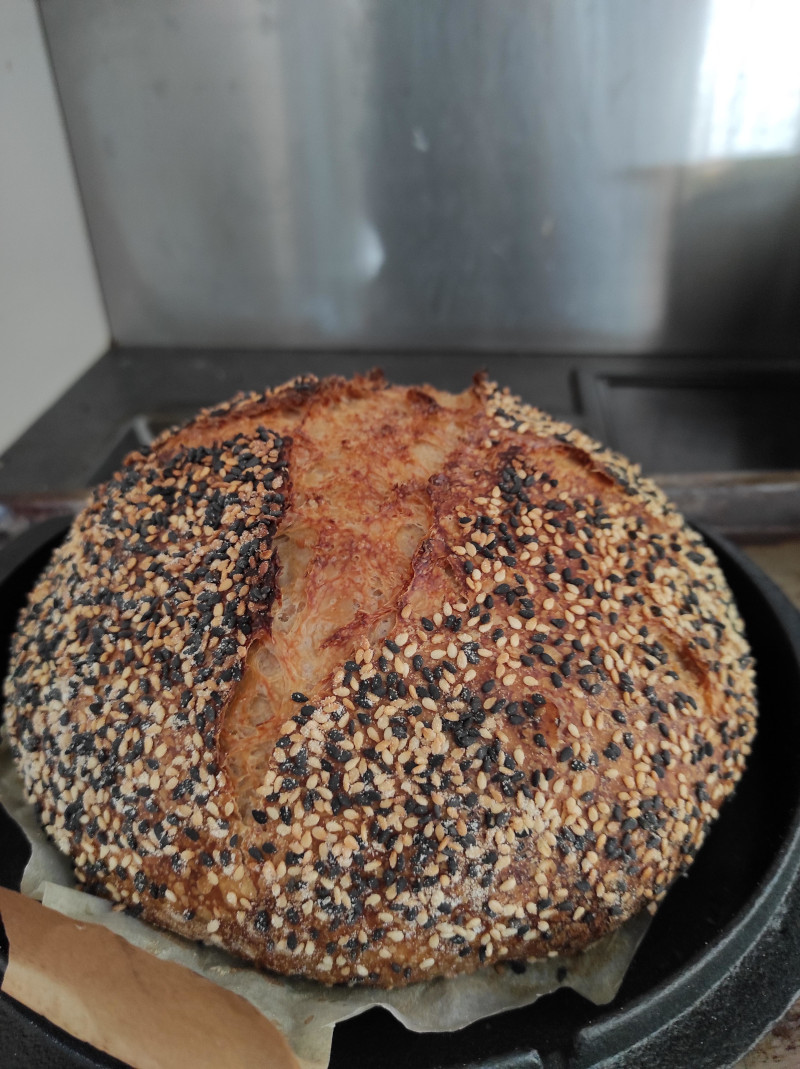Joy Ride coffee has a YouTube channel with what, for me, are quintessential quarantine videos. Videos often have a transporting sound track, and the visuals usually include beautiful tracking shots of Romanian scenery which have transported me out of lockdown. His quest for lacy crumb has been quite 'infectious', if you'll excuse the covid pun.
In his latest video there is an appealing technique for shaping directly from dough that has been coil folded. No banneton is used.
The method relies on dough preparation that included a lamination and gentle coil folds. Good dough strength is required, with the dough proofing under tension. It can include proofing in the fridge too.
Instead of performing a traditional shaping and transfer to a banneton he does something different. Dough that is already highly fermented and has already doubled in volume (at least) is gently inverted from the dish in which coil folding was being done onto a lightly floured surface. It is then gently folded over, as you would fold over an omelette in a frying pan and sealed around the edges. It is then lifted a quarter turn by means of a dough scraper to give a shape more like a batard, and transferred onto a parchment for baking. Finally, it is left for an hour covered with a tea towel before baking, although I do wonder if this additional settling is actually required.
It makes sense that this gentle shaping with very little degassing could create a better crumb. Plus, the resultant loaf has a shape that looks more or less like a traditional batard produced using a banneton.
I played around recently making a loaf with the method, but since my dutch oven is round I added an extra manipulation for pushing the batard shaped dough into a boule shape. After making the batard shape, and working my way around in a circle, I pushed in from the side moving down to the bottom, cinching the dough to the base as I went. I used two dough scrapers for this - taking turns with each dough scraper to free the dough scraper trapped underneath the dough. Working this way I managed to get a round boule too, but as you can see from the pictures the crumb was quite unusual - there were these elongated and vertically oriented alveoli clustered near the base, almost certainly created as an artifact from my additional step of transforming the dough into the boule shape. I suspect that if I'd stopped at the batard shape without doing that last step it would have had a more regular crumb, and been more successful.
Hope this post gives someone ideas! It is exciting to try out a completely different method sometimes. What I like about it is that it has the potential to produce a better crumb and maybe even simplify the process of bread making. The number of steps could be reduced. An it might be a neat way to make bread after an overnight counter ferment.
-Jon
 After removal from Pyrex dish used for coil folds
After removal from Pyrex dish used for coil folds
 Then folded over as you would fold over an omelette in a frying pan, and sealed around the edges.
Then folded over as you would fold over an omelette in a frying pan, and sealed around the edges.
 Given a quarter turn, then rounded using two dough scrapers, as described in text.
Given a quarter turn, then rounded using two dough scrapers, as described in text.
 The boule shape is retained.
The boule shape is retained.

The additional rounding to make a boule shape seemed to result in these vertically oriented elongated alveoli. Will try again and leave it in the basic batard shape next time as I think that will work out much better.